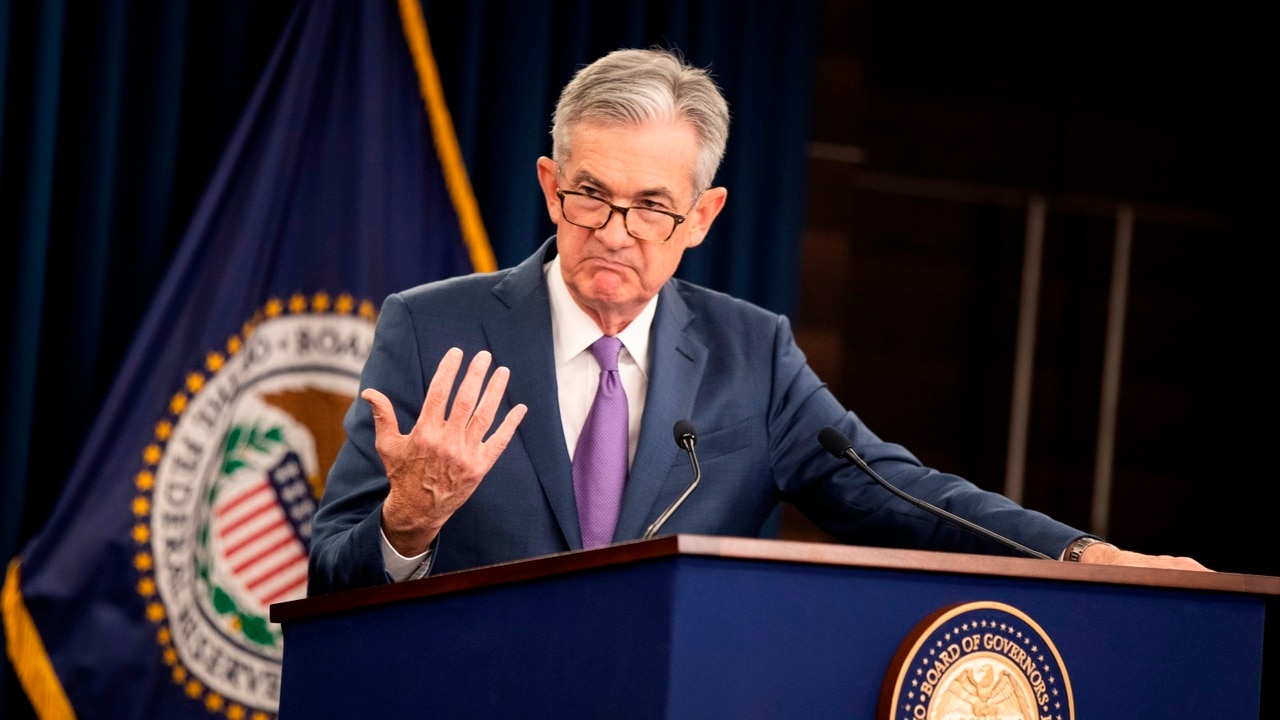Why defensive sectors could be the place for investors to be as interest rate cuts start
With US interest rates cut sharply and Australia’s Reserve Bank expected to follow by early 2025, strategists are looking at what works best in equities as central banks pivot to cuts.

Should investors stick with expensive growth stocks or switch to defensives?
With US interest rates cut by 0.5 per cent and Australia’s Reserve Bank expected to follow the easing cycle by early 2025, strategists are looking at what works best in equities as central banks pivot to rate cuts.
In Australia, stockmarket returns are less consistently positive than the US after the start of rate cuts. Overall performance depends more on whether the US economy avoids a recession.
The ASX 300 has only risen in three of seven years after the first rate cut in Australia.
It rose 31 per cent in 1996 when the RBA cut rates, while the US remained in an economic expansion. However, the average return in post-cut years is only 2 per cent, according to Macquarie Equities.
“For market returns, the US cycle matters more than the RBA,” Macquarie’s Australian equities strategist, Matthew Brooks, said.
With the current cycle in a slowdown phase according to the OECD Leading Economic Indicator, he said investors should expect below average returns with more volatility.
Brooks also saw a growing risk that the next step will be a downturn phase.
But right now the market continues to “hope Fed cuts re-accelerate the cycle”.

To highlight that point, Australian sharemarket returns since 2022 have followed the global economic cycle – which has been propped up by surprisingly resilient US growth – whereas the economic impact of interest rate hikes was “not determinant”.
“If the current cycle continues into a downturn phase, we would expect a period of negative returns, even if the RBA does cut rates,” Mr Brooks said.
In terms of sectors, he found that defensive sectors outperformed cyclicals in the past seven RBA easing cycles, driven by growth concerns and the higher earnings certainty of defensives.
The market also favoured lower-risk strategies, which meant large caps did better than small caps, and growth beat value. Bonds were also likely to outperform stocks, while the weaker growth that led to rate cuts also meant falling commodity prices and Australian dollar weakness.
In terms of sectors, Brooks found that construction materials were usually the top performer, having beaten the broader market after each easing cycle, usually supported by rising home prices.
Consumer staples and pharma/biotech were the best performers in the US.
Both also tended to outperform in Australia as investors sought defensive earnings.
Gold was another sector that outperformed in the US and Australia, supported by lower bond yields.
One sector that did better in Australia was financial services, again due to falling bond yields.
Macquarie’s model portfolio for the Australian market is overweight health care, consumer staples and gold as well as building materials with the inclusion of James Hardie. It is underweight industrial mining stocks, which tend to underperform after rate cuts, and also banks due to high valuations.

While the RBA has been adamant that rate cuts are unlikely this year, Mr Brooks pointed out that inflation has continued to slow in every year after the start of rate cuts since 1990.
“Given lags in monetary policy, there is a case for the RBA to pivot to cuts now to reduce the risk of higher unemployment,” he said.
Meanwhile for the global stockmarket, UBS preferred to stay overweight defensives.
Cyclicals are still discounting much higher economic growth, yet global PMI new orders are peaking, and defensives and consumer cyclicals tend to outperform when the US yield curve “disinverts” as it did recently for the first time since early 2022.
“Ironically, a yield curve disinversion has been a clear economic warning signal,” UBS strategist Andrew Garthwaite said.
He said defensives normally outperform the market after the start of rate cuts, and cyclicals have outperformed for the second-longest period on record, so a pullback may be “more than average”.
Relative to defensives, cyclicals now look “expensive” in the US and only neutral in Europe.
Earnings revisions (upgrades minus downgrades) of cyclicals have rolled over relative to defensives, and when aggregate market global earnings revisions roll over, cyclicals underperform 65 per cent of the time over the next 12 months.
Volatility could rise from current low levels and that’s normally bad for cyclicals.
Also, cyclicals tend to do better from November rather than September.
While some defensive sectors like tobacco were abnormally overbought, Mr Garthwaite isn’t ruling out a “defensive-led bull market” as has been the case since the August sell-off.
“This happens about a third of the time, but it shows that it is possible to expect flat-to-up markets and be overweight defensives,” he said.
Cyclical sectors have been oversold of late but this wasn’t a strong buy signal and most cyclical sectors globally remained “moderately crowded” in terms of positioning.
Apart from the chance of a “technical recession”, caused by the lags in monetary policy, he doesn’t see much risk of a “hard landing” outside of China. China’s economic risks have led UBS to recommend underweight positions in luxury brands, iron ore, bulk chemicals and steel.
“The debate is, of course, as growth slows will the market believe that policy response will work, especially with the market already pricing in a 3 per cent Fed Funds rate by the end of 2025.”






To join the conversation, please log in. Don't have an account? Register
Join the conversation, you are commenting as Logout